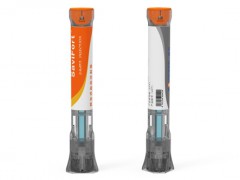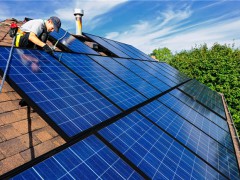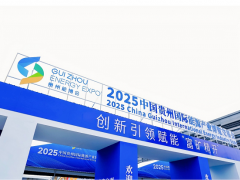???? 據(jù)彭博社4月13日?qǐng)?bào)道,隨著歐佩克+和中東地區(qū)石油產(chǎn)量的增加,提高了該地區(qū)石油運(yùn)輸?shù)母?jìng)爭(zhēng)力,一場(chǎng)價(jià)格戰(zhàn)可能即將在全球石油市場(chǎng)上演,這可能會(huì)迫使其他供應(yīng)商對(duì)其原油價(jià)格進(jìn)行打折。
????從一個(gè)關(guān)鍵的價(jià)差的擴(kuò)大可以看出這一警告信號(hào)——交易員利用這個(gè)價(jià)差來(lái)判斷來(lái)自中東的貨物能否承受與布倫特原油相掛鉤的價(jià)格。目前,這一價(jià)差接近逾16個(gè)月來(lái)的最大水平,這對(duì)布倫特原油來(lái)說(shuō)不是好兆頭。
????FGE的高級(jí)石油分析師格雷森·林(Grayson Lim)表示:“現(xiàn)在亞洲客戶們得到的原油價(jià)格要便宜得多,而且很多都來(lái)自中東。那些與布倫特原油價(jià)格相掛鉤的原油需要以很大的折扣出售,才能吸引該地區(qū)的買家。”
????本月初,歐佩克及其盟友決定放松對(duì)石油產(chǎn)量的大幅限制——正是這些限制措施挽救了去年石油價(jià)格因疫情而崩潰的局面。此舉將使石油日產(chǎn)量恢復(fù)200多萬(wàn)桶,且供應(yīng)將分階段恢復(fù),直至7月。市場(chǎng)預(yù)期,疫苗的推出將支撐能源消費(fèi)的進(jìn)一步增長(zhǎng)。到目前為止,該計(jì)劃得到了歐佩克主要領(lǐng)導(dǎo)者沙特阿拉伯的支持。值得一提的是,布倫特原油和西德克薩斯中質(zhì)原油期貨今年以來(lái)上漲了20%以上。
????在歐佩克+準(zhǔn)備放松石油供應(yīng)限制的同時(shí),伊朗石油持續(xù)出口,加上一些北海油田計(jì)劃中的維護(hù)工程,將縮減布倫特原油的產(chǎn)量,使得其與中東的石油價(jià)差升至2019年末以來(lái)的最大水平。
????與幾個(gè)月前相比,這是一個(gè)大逆轉(zhuǎn)。去年11月,布倫特迪拜期貨交易所還顯示布倫特-迪拜的價(jià)格有小幅折讓。且在去年9月和10月的末段時(shí)間,與迪拜貨物價(jià)格相對(duì)而言更高些。
????當(dāng)前的這種價(jià)差將促使買家貨比三家,在亞洲,原油價(jià)差的擴(kuò)大意味著,用戶可能會(huì)從中東購(gòu)買更多價(jià)格合理的現(xiàn)貨原油,除非大西洋盆地和西非的石油被大幅削減,以保持競(jìng)爭(zhēng)力。
????這方面的跡象可能已經(jīng)出現(xiàn)了。上周,安哥拉國(guó)家石油公司(Sonangol Group)再次下調(diào)了5月份與布倫特油價(jià)掛鉤的Saturno貨物的報(bào)價(jià)。尼日利亞還將Qua Iboe和Bonny Light的官方售價(jià)下調(diào)至去年11月以來(lái)的最低水平。
????王佳晶 摘譯自 彭博社
????原文如下:
????A Key Oil Spread Points to Price War Erupting as Supply Expands
????A price war may be looming in the global oil market as rising output from OPEC+ and the Middle East boosts the competitiveness of the region’s shipments, potentially forcing other suppliers to discount their barrels.
????The warning signs can be seen in the widening of a key price spread that’s used by traders to determine the affordability of cargoes from the Middle East against Brent-linked barrels. Right now, the gap is close to the widest in more than 16 months, and that doesn’t bode well for oil that’s priced against Brent.
????“There’s much cheaper crude, and a lot of it coming from the Middle East,” said Grayson Lim, a senior oil analyst at FGE. “Those Brent-linked cargoes will need to be offered at a huge discount for buyers in the region to snap up the barrels,” he said, referring to Asian users.
????Earlier this month the Organization of Petroleum Exporting Countries and its allies decided to relax the deep production curbs that rescued prices from last year’s pandemic-driven collapse. The move will see more than 2 million barrels a day in supply restored in stages through to July amid expectations that the roll-out of vaccines will underpin further gains in energy consumption. So far, the plan has been defended by leading architect Saudi Arabia, with futures for Brent and West Texas Intermediate up more than 20% year-to-date.????At the same time that the OPEC+ cartel is preparing to loosen off the taps, there have been continuous flows of clandestine Iranian oil to China. That -- plus planned maintenance of some North Sea fields, which will shrink the flow of Brent-linked barrels -- has pushed out the spread to the widest since late 2019, according to data compiled by Bloomberg.
????That’s a big reversal from just a few months ago. The so-called Brent-Dubai exchange of futures for swaps -- to give the marker its formal name -- showed Brent-Dubai at a small discount as recently as November. In October and September, Dubai-linked cargoes were also more costly on some days.
????The shift favoring Dubai-linked flows is likely to ripple through the market, prompting buyers to shop around and sellers to respond. In Asia, the widened spread means users will probably scoop up more affordable spot cargoes from the Middle East, unless oil from the Atlantic Basin and West Africa is slashed to stay competitive, according to traders who asked not to be identified.
????There may be signs of that already. Last week, Angola’s Sonangol Group again reduced the offer price for a Dated Brent-linked Saturno cargo for May, with the shipment eventually taken by China’s Unipec. Nigeria has also cut official selling prices of Qua Iboe and Bonny Light to the lowest since November.
????While Iran’s U.S.-sanctioned barrels aren’t counted under the formal OPEC+ quota system, the flows still contribute to downward pressure on Dubai-linked cargoes. The Iranian shipments taken by China reduce local demand for other spot cargoes. FGE estimates that Iran’s exports of crude, condensate and fuels could easily reach up to 2 million barrels a day in the coming months.
免責(zé)聲明:本網(wǎng)轉(zhuǎn)載自其它媒體的文章,目的在于弘揚(yáng)石化精神,傳遞更多石化信息,并不代表本網(wǎng)贊同其觀點(diǎn)和對(duì)其真實(shí)性負(fù)責(zé),在此我們謹(jǐn)向原作者和原媒體致以敬意。如果您認(rèn)為本站文章侵犯了您的版權(quán),請(qǐng)與我們聯(lián)系,我們將第一時(shí)間刪除。







